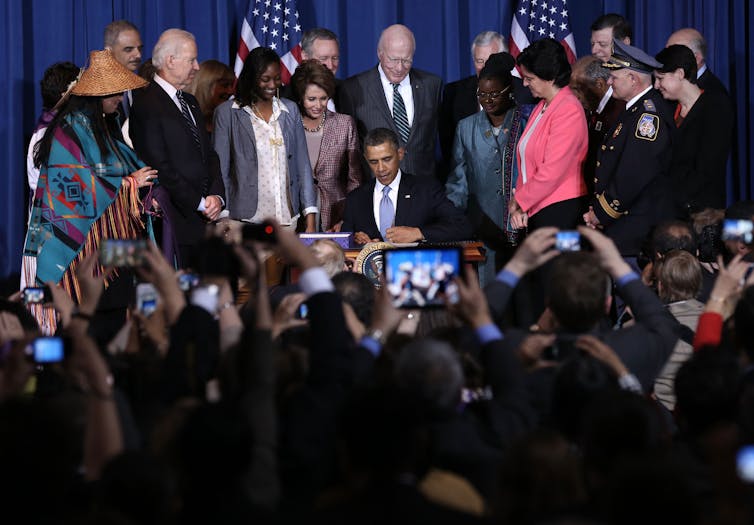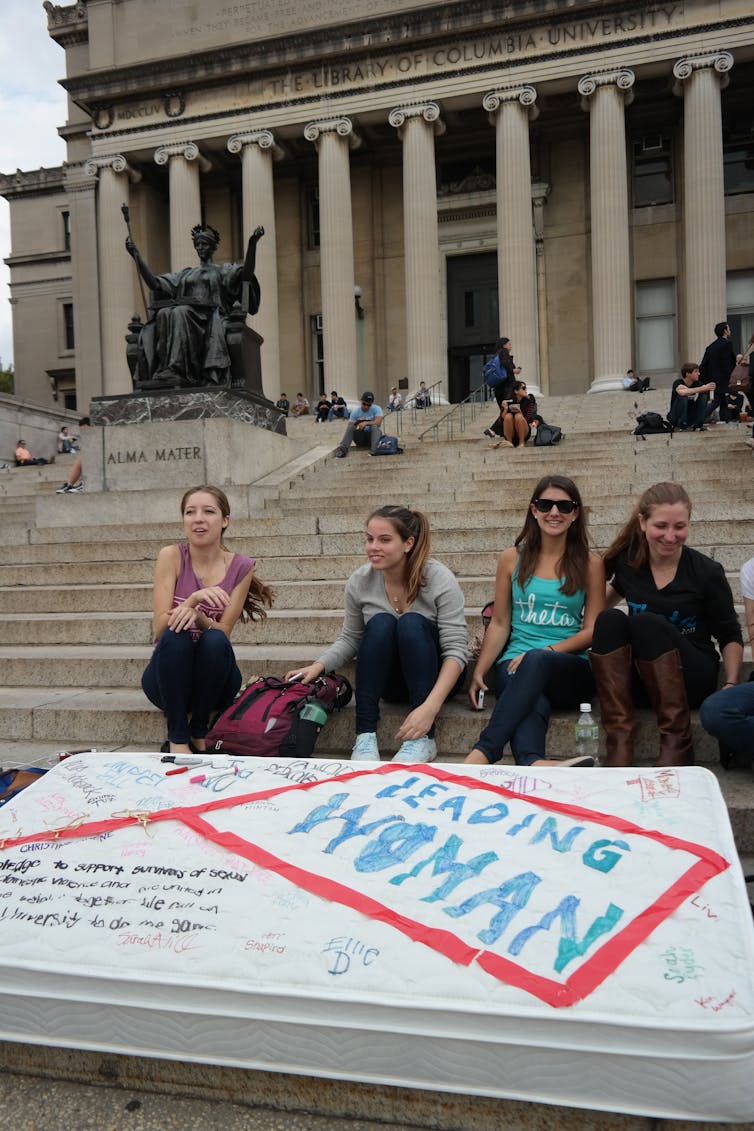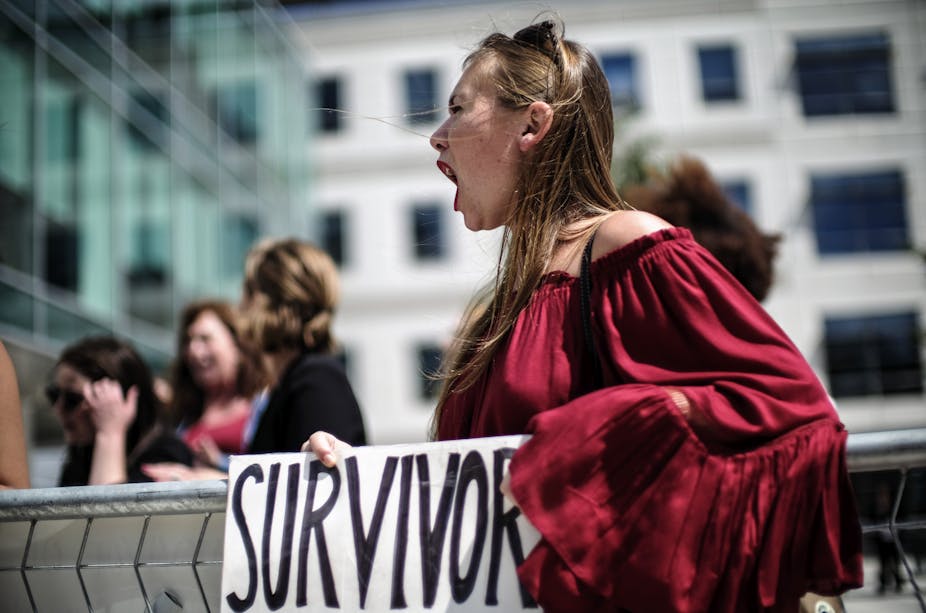Ten years after a federal law required colleges and universities to offer sexual assault prevention programming to students, only about half of them are doing it.
Without a national database containing standardized measures of campus sexual assault over time, it is difficult to determine whether campus sexual assault has decreased since this prevention programming requirement went into effect. One review of campus climate surveys, designed to measure various forms of sexual misconduct at colleges and universities, revealed differences in the ways that schools measure assault.
Scope and consequences of campus sexual assault
A large-scale 2019 campus climate survey of students across 33 U.S. campuses indicated that 1 in 5 women experienced some form of sexual assault after entering college. Both women and nonbinary students, those whose gender may not align with their sex assigned at birth, were four times as likely to experience sexual assault as men.
College students who are sexually assaulted face numerous consequences
College students who are sexually assaulted are at risk of experiencing numerous adverse outcomes, including poor academic performance, post-traumatic stress disorder, repeated sexual assault and suicidal thoughts.

Considering these harmful outcomes, effective sexual assault prevention programs have the potential to protect college students from a range of problems.
The effects of campus sexual assault prevention programs
As researchers who study sexual violence, we examined prevention programs and their effects on campus sexual assault.
Our research team analyzed data from 80 studies evaluating campus sexual assault prevention programs in the U.S. These programs cover a range of topics designed to educate college students about sexual assault and lower their risk of victimization and perpetration. Our analysis indicated that the most common topics discussed in these programs were alcohol use and the importance of sexual consent. Many programs also encouraged participants to be responsible “bystanders” who help when someone is at risk for assault.
We found that programs have a more pronounced effect on students’ attitudes and knowledge about sexual assault than on the prevention of sexual assault. The largest effect was on students’ understanding of what constitutes sexual assault. We found moderate reductions in students’ beliefs in myths that create hostility toward victims of sexual assault. There were also moderate increases in bystander intentions to help and in their confidence that they could help. The smallest significant effect was on victimization, which includes a range of behaviors such as unwanted sexual contact and rape. We found no significant effect on participants’ rates of sexual assault perpetration.
Violence prevention programs have room for improvement
Violence prevention programs often target students’ attitudes and knowledge with the intent of decreasing violence. Yet students who participated in prevention programs had only a slightly lower rate of sexual victimization than students who did not participate. Also, students who participated in programs had similar rates of perpetration than students who did not participate.
We analyzed studies that were released between 1991 and 2021 and found programs are no more or less effective than they were three decades ago.
In general, programs that we analyzed were less effective at preventing sexual victimization of participants when greater numbers of men were included in the studies. However, this is likely because men have a lower risk of being sexually assaulted than women.
We do not know if these programs protect LGBTQ students from assault more or less than they protect straight or cisgender students. This is because the majority of studies did not report the sexual orientation of participants, and researchers in most studies allowed students to define themselves only as men or women, without providing nonbinary options.

Our findings indicate that campus sexual assault prevention programs lead to only a small reduction in sexual assault. That may be because the content of many of these programs lags behind recommendations of leading authorities such as the World Health Organization.
An ecological approach to campus sexual assault prevention
The World Health Organization recommends a broad ecological approach to preventing violence by targeting risk factors that can exist on an individual level, in relationships, within the community and in society at large.
People who misuse alcohol or drugs, or who are tolerant of violence, are more likely to sexually assault someone. Having witnessed parental violence or hanging out with friends who behave in violent ways also makes someone more likely to commit sexual assault.
Students at colleges and universities with cultures that tolerate sexual violence are at risk for perpetrating sexual assault. Also, in broader society, gender inequity and norms that support violence can lead to sexual assault perpetration.
According to the ecological model, the most effective interventions target risk and protective factors that lie at the individual, relationship, community and societal levels. Most research on campus sexual assault prevention addresses factors that lie at the individual level, such as by targeting individual students’ drinking behavior. A smaller number of studies address the relationship level, such as by teaching couples to communicate in a healthy manner. In our search of available research evaluating campus sexual assault prevention programs, we found very few programs targeting the community or societal level. Rare examples included programs that tested campuswide policies that treat sexual assault as a serious problem.
As long as prevention programs continue to focus on individuals and not the broader environment, they will continue to have small effects on campus sexual assault.

